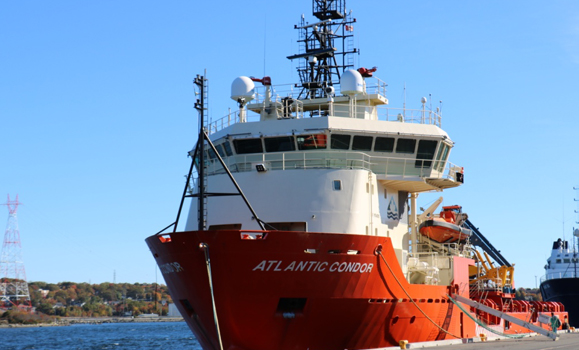Every year in spring and fall, the number of plankton in oceans rapidly increases, causing what’s called an "algal bloom." For fish in the very earliest stages of life, these blooms are a nutritional feast necessary for growth.
As a primary producer in the marine food web, plankton and other microbes play a crucial role supporting life underwater. When fish eggs are released into the water they drift among plankton with the ocean currents. Eventually the eggs hatch into larvae that depend on plankton in the algal bloom to grow.
“The timing of these blooms in is critical for larval fish to survive,” explains , Canada Research Chair in Marine Microbial Genomics and Biogeochemistry and professor in Dal’s Department of Biology. “If the plankton blooms too fast and the larval fish aren’t ready, then they won’t be able to access food.”
Changing ocean conditions, like warmer temperatures, may affect the timing of blooms and lead to consequences on fish populations in the area. Besides that, commercial activity in the Atlantic creates emphasizes the need to learn more about the state of plankton.
Recently announced funding now allows Dr. LaRoche and her team to gather and analyze data on plankton dynamics in Nova Scotia’s coastal waters.
Coming together for ocean research
Earlier this week, Dal-headquartered (MEOPAR) and Irving Shipbuilding Inc. (ISI) were in Ottawa to .
“Irving Shipbuilding’s $1-million contribution in support of progressive, coast-to-coast-to-coast marine research highlights the importance of effective industry and academic partnerships,” said MEOPAR Scientific Director and Dal’s Canada Excellence Research Chair Doug Wallace.
“As a result of their investment, MEOPAR contributed $800,000 to support these nine research projects, which also leveraged a further $2 million from 27 contributing partners. We’re proud to partner with Irving Shipbuilding on this important research.”
Dr. LaRoche received $150,000 from that pool of funding. It will help support a new postdoctoral student, two undergraduate student researchers and six co-op students required for the project.
Ocean research on commercial vessels
The LaRoche Research Group will examine what conditions are at play when plankton blooms occur between mainland Nova Scotia and Sable Island. Collecting and analyzing samples of the water is required for this work. Until now, the team has only been able to do that twice a year. While helpful, that’s just not enough to get a clear picture of what’s happening.
Enter Atlantic Towing Ltd. The Atlantic Canadian company has voluntarily provided Dr. LaRoche’s team with access and facilities on the Atlantic Condor, a resupply ship that makes weekly trips to the Deep Panuke drilling platform near Sable Island.
“With Atlantic Towing, we’re going to get weekly data for a whole year,” says Dr. Laroche. “It’ll be really amazing to see how conditions change that frequently. This allows us to create a far more accurate picture of what is happening in the ocean.”

The Atlantic Condor. (MEOPAR photo)
Dr. LaRoche’s research instrumentation on board includes a state-of-the-art underwater holographic from Halifax-based company 4-Deep Inwater Imaging. The technology, designed with research conducted in Dal physics labs, will allow researchers to capture detailed images of the plankton present in water during these weekly trips.
“Every five minutes during the trips, we’ll collect several megabytes of data,” says Dr. LaRoche. “If we can do this every year, we’ll get an idea of what coordinates these blooming events… that’ll be very important information for managing fisheries.”
Dr. LaRoche’s instrumentation joins a suite of oceanographic sensors on board the Atlantic Condor. In addition to benefitting her team, the total instrumentation package will contribute data to Dr. Wallace’s group and other projects through MEOPAR and (IORE).
“Collaborating with industry to leverage commercial ships for research will dramatically improve our ability to collect frequent, continuous data from the ocean,” says Dr. LaRoche.
Irving Shipbuilding contributed $1 million to the $1.8 million call for proposals. ISI’s funding is pursuant to its Value Proposition obligation under the National Shipbuilding Procurement Strategy, whereby Irving Shipbuilding is committed to spending 0.5% of contract revenues with the aim of creating a sustainable marine industry across Canada.

